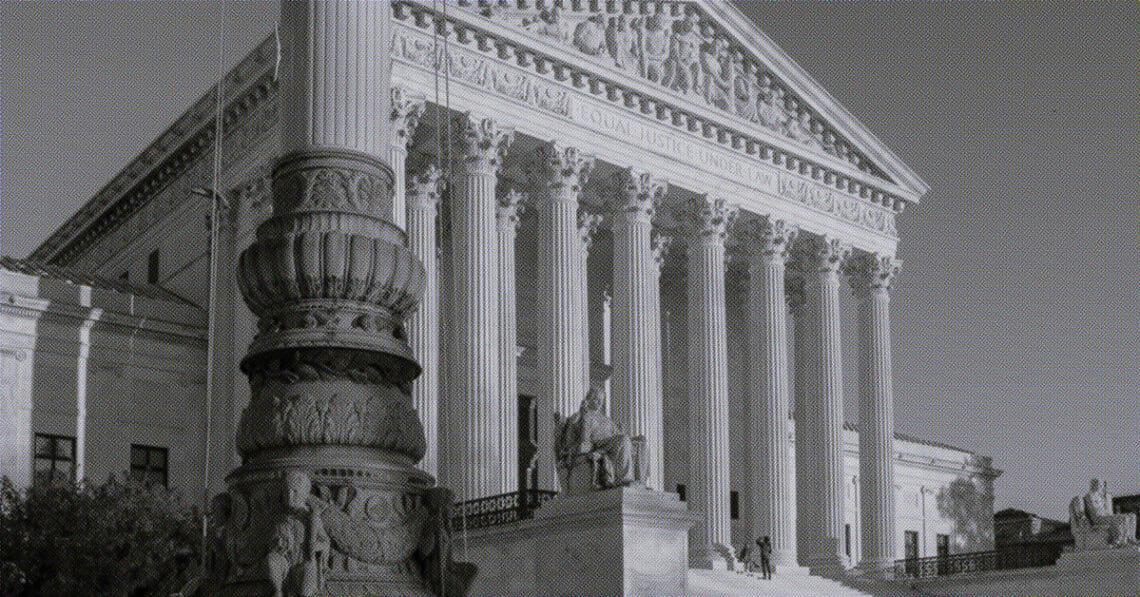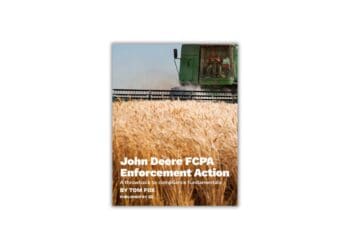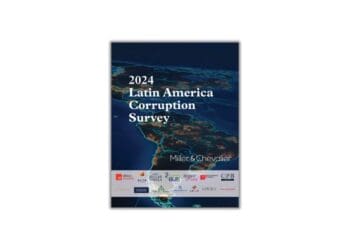In a week filled with Supreme Court decisions expected to be of great consequence for corporate integrity professionals, the high court also complicated public corruption cases. A group from Womble Bond Dickinson explores the details and what the Snyder decision could mean over the long haul.
Editor’s note: This article was co-authored by Luke Cass, Joe Whitley, Rhett DeHart, Michael Clark and Ben Smith of Womble Bond Dickinson.
“The Government’s interpretation of the statute would create traps for unwary state and local officials.”
Justice Brett Kavanaugh writing for the majority in Snyder v. United States
On June 26, the U.S. Supreme Court issued an opinion in a public corruption case that could have a lasting impact on how the U.S. government prosecutes corruption and procurement fraud cases involving state and local officials. In Snyder v. United States, the Supreme Court overturned the criminal conviction of James Snyder, the former mayor of Portage, Indiana, for taking an illegal gratuity payment under 18 U.S.C. § 666(a)(1)(B). This statute prohibits certain state and local employees from corruptly accepting a payment intended to “influence[] or reward[]” an official act. The Supreme Court held that the statute applies only to the bribery of state or local officials and does not include gratuities paid to an official as a reward for past official actions.
While the Supreme Court’s decision was narrow, it may have a major impact on procurement fraud prosecutions and investigations that may follow from projects related to the 2021 Infrastructure Investment and Jobs Act. Snyder clearly eliminates one tool available to federal prosecutors; however, this case concerned only local contracts and a local official. What remains unclear is whether Snyder applies when state and local officials are directly administering federal dollars.
The statute
The statute at the center of Snyder is § 666. Section 666(a)(1)(B) makes it, inter alia, a crime for any state or local official that corruptly solicits or accepts anything valued at $5,000 or greater in exchange for influence over, or as a reward for, business with an organization that receives $10,000 in federal funds. This restriction does not apply to “bona fide salary, wages, fees, or other compensation paid, or expenses paid or reimbursed, in the usual course of business.”
Additionally, only state and local officials of entities that receive at least $10,000 in federal funds in a one-year period are subject to the statute. Violations of § 666 can result in imprisonment for up to 10 years.
When Congress passed § 666 in 1984, it sought to close a potential loophole and ensure that both the federal bribery statute and the federal gratuities statute apply to state and local officials. However, two years later, Congress amended § 666 to avoid its possible application to regularly accepted business practices.
Section 666 is a powerful tool, which courts have described as “extremely broad in scope” with “expansive, unqualified language” that cover a variety of factual circumstances. Even before Snyder, however, numerous courts and defense counsel expressed concern that the statute is overly broad.
Corruption Down Under (Part I): Australia, Not What It Seems
Notable recent cases betray Australia’s perception as ‘clean’ country
Read moreBribes vs. gratuities
Critical to understanding the court’s decision in Snyder is the distinction between a “bribe” and a “gratuity.” Only faintly related, gratuity is bribery’s smaller, weaker second cousin.
The distinguishing feature of each crime is a defendant’s intent. “Bribery requires intent ‘to influence’ an official act or ‘to be influenced’ in an official act, while illegal gratuity requires only that the gratuity be given or accepted ‘for or because of’ an official act. In other words, for bribery there must be a quid pro quo — a specific intent to give or receive something of value in exchange for an official act. An illegal gratuity, on the other hand, may constitute merely a reward for some future act that the public official will take, or for a past act that he has already taken.”
A gratuity does not require a corrupt intent and is punished less severely than bribery; potential imprisonment for bribery is up to 15 years compared with the statutory maximum of two years for a gratuity.
The Snyder decision
James E. Snyder, the former mayor of Portage, a northern Indiana city near Lake Michigan, was convicted under § 666(a)(1)(B) for accepting an illegal gratuity after a local trucking company wrote him a $13,000 check following the award of two contracts valued at $1.1 million by the city of Portage the previous year, despite evidence of a consulting agreement between the parties.
A jury in the Northern District of Indiana found Snyder guilty, and the U.S Court of Appeals for the Seventh Circuit subsequently upheld the conviction. The Supreme Court, in a 6-3 decision, reversed Snyder’s conviction and remanded the case back to the Seventh Circuit on the grounds that § 666 only applies to bribes, not gratuities.
Justice Brett Kavanaugh, writing for the majority, explained that based on the text, statutory history, statutory structure, statutory punishments, federalism and fair notice, § 666 does not criminalize gratuities. In a concurring opinion, Justice Neil Gorsuch added that “any fair reader of this statute would be left with a reasonable doubt about whether it covers the defendant’s charged conduct. And when that happens, judges are bound by the ancient rule of lenity to decide the case as the Court does today, not for the prosecutor but for the presumptively free individual.”
“Interpreting § 666 as a gratuities statute would significantly infringe on bedrock federalism principles,” the court held. The court reasoned that many state and local governments adopt differing approaches to regulating gratuities given to state or local officials and that these differing approaches “reflect nuanced state and local policy judgments about when gifts expressing appreciation to public officials for their past acts cross the line from the innocuous to the problematic.” In the court’s view, those “carefully calibrated policy decisions that the States and local governments have made about gratuities would be gutted if we were to accept the Government’s interpretation of § 666,” especially when § 666 covers about 19 million state and local officials nationwide.
The court also relied on the inclusion of “corruptly” in § 666 and the statute’s punishment of 10 years, which both differ from 18 U.S.C. § 201(c), the gratuity statute for federal employees. Section 201(c) does not require that an official possesses “corrupt intent,” and the maximum sentence for a violation of § 201(c) is two years imprisonment. Based on these differences, the court concluded that § 666 must be read as a bribery statute. Requiring “corrupt intent” adds an additional element that is not typical for gratuity prosecutions. Additionally, including gratuities under the umbrella of § 666 results in a more severe punishment for a state and local official compared to the punishment for the same behavior by a federal official.
Overall, the court was concerned that if it ruled that § 666 also encompasses gratuities, then the court would “radically upend gratuities rules and turn § 666 into a vague and unfair trap for 19 million state and local officials.” Instead, the court ultimately concluded that “Section 666 is a vital statute, but its focus is targeted: Section 666 proscribes bribes to state and local officials, while allowing state and local governments to regulate gratuities to state and local officials.”
Although not featured prominently in its opinion, the court also resolved a split among the circuits on this issue. In a strong dissent, Justices Ketanji Brown Jackson, Elena Kagan and Sonia Sotomayor trumpeted § 666’s deliberate expansive language and wrote that “[]g]reed makes governments—at every level—less responsive, less efficient, and less trustworthy from the perspective of the communities they serve.”
Lessons & implications
Snyder clearly limited a powerful tool for federal prosecutors in public corruption matters, as seen in its potential impact on some ongoing high-profile corruption cases. After Snyder, federal prosecutors cannot bring charges related to a gratuity payment to local or state officials under § 666. However, it is less clear how the DOJ will proceed with prosecuting gratuity payments to state and local officials that will be distributing federal funds as part of a major procurement project, such as projects related to the Infrastructure Act.
The Infrastructure Act injected $1.2 trillion procurement dollars in federal funding for a slew of projects to improve various aspects of the infrastructure at the national, state, and local level. The Infrastructure Act will fund a variety of projects through grants to states, which will then use state and local officials to distribute the federal funds. It is paramount to the procurement process that officials administer the procurement act with integrity and fairly distribute the funds. However, as we noted in a previous article, “[f]raud tends to rise following a big boost in federal funding like that coming from the $1.2 trillion Infrastructure Act.” Thus, despite the setback in Snyder, the Justice Department will presumably keep a watchful eye to protect how federal funds are spent.
One potential approach federal prosecutors may take to punish any possible state or local official who accepts an improper gratuity in connection with a federal program is to press charges under the § 201(c), the federal employee gratuity statute. Prosecutors may make the argument that state or local government employees involved in Infrastructure Act projects serve in a quasi-federal role because they administer federal funds. This argument could carry some weight, as the Supreme Court has previously held that a state or local government employee meets the definition of a federal “public official” under § 201 when that individual “possess[es] some degree of official responsibility for carrying out a federal program or policy.” Accordingly, any business and individuals working on projects funded through the Infrastructure Act should continue to monitor their compliance policies and ensure they remain aligned with the Justice Department’s guidance.
Furthermore, although Snyder eliminates the risk of the Justice Department prosecuting gratuity payments to state and local officials performing state and local functions under § 666, there is still the possibility that many of these prosecutions may shift to state or local levels. Thus, it is imperative that businesses and individuals that work with state and local government entities remain up to date on any state or local gratuity laws as well as commercial bribery statutes.
Compliance professionals would also be well-advised not to overread Snyder. The holding was specific to § 666, but the Supreme Court’s references to seemingly minor “token[s] of appreciation” such as “gift cards, lunches, plaques, books, framed photos, or the like”[ are often forewarnings of more serious issues including potential violations under the Foreign Corrupt Practices Act, Foreign Extortion Prevention Act, the Anti-kickback Statute, the Travel Act, conflicts of interest or state commercial bribery statutes.
Compliance professionals should familiarize themselves with these statutes to be able to distinguish whether these “tokens” are violations of company policy or the canaries in the coal mine signaling far more serious offenses. Ultimately, whether a company’s compliance program will be deemed “effective” under Department of Justice policy will be based on its risk profile, including a company’s size, industry, geographic footprint, regulatory landscape and operations.
Snyder returned responsibility to states for policing gratuities involving government officials and reversed an overly expansive § 666 prosecution. Under DOJ policy, consultation with the public integrity section of the Criminal Division is encouraged but perhaps should be mandatory in the future, to ensure proper application and uniformity of public corruption prosecutions.
More importantly, Snyder was the latest in a string of Supreme Court reversals that have struck down novel prosecution theories, including Ciminelli, Percoco and Fisher where a variety of federal convictions were invalidated. This term the Supreme Court also granted two separate petitions for writs of certiorari from Third Circuit cases Kousisis et al. v. United States and Porat v. United States seeking to challenge the fraudulent-inducement theory of wire fraud. These decisions and grants of certiorari send a strong message to the Department of Justice to tread carefully when pursuing novel theories in criminal prosecutions.















